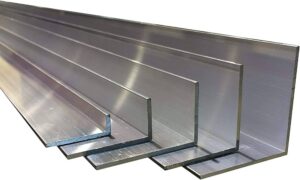Choosing the Right Aluminium Angle for Your Needs
Selecting the appropriate aluminum angle for your project is crucial to ensure structural integrity and meet specific requirements. With various sizes, thicknesses, and types available, understanding how to choose the right aluminum angle can make a significant difference in the success of your project. Here’s a guide to help you make an informed decision.
Understanding Aluminium Angle Types
Aluminum angles come in different types, primarily defined by their dimensions and the grade of aluminum used. The most common grades are 6061 and 6063, each offering distinct properties. Aluminum angle 6061 is known for its excellent mechanical properties and corrosion resistance, making it ideal for structural applications. On the other hand, 6063 offers better formability and a smoother finish, making it suitable for decorative and architectural purposes.
Consider the Load-Bearing Requirements
When choosing an aluminum angle, consider the load-bearing requirements of your project. The strength and durability of the angle must align with the demands of the application. For heavy-duty structural applications, opting for a thicker and more robust aluminum angle is essential. Conversely, for lightweight or aesthetic projects, a thinner angle might suffice, ensuring ease of handling and installation.
Evaluate the Environmental Conditions
The environment in which the aluminum angle will be used plays a significant role in the selection process. If the project is exposed to harsh weather conditions or corrosive elements, choosing an aluminum angle with superior corrosion resistance is vital. For instance, an anodized or coated aluminum angle can offer additional protection against corrosion, extending the lifespan of the structure.

Size and Dimensions
The size and dimensions of the Aluminum angle are critical factors to consider. Measure the space and requirements of your project accurately to determine the appropriate size. Aluminum angles are available in various lengths, widths, and thicknesses, allowing you to select the perfect fit for your specific needs. Ensuring the right dimensions will help maintain the structural integrity and aesthetic appeal of your project.
Machinability and Finish
Depending on the project, you might need to cut, drill, or weld the aluminum angle. Therefore, considering the machinability of the aluminum grade is important. For projects requiring intricate designs or custom modifications, opting for an easily machinable aluminum angle will save time and effort. Additionally, if the appearance of the angle is important, selecting an aluminum angle with a smooth finish or one that can be polished to your desired look is essential.
Budget Considerations
While aluminum angles offer great benefits, they come at various price points depending on the grade, size, and finish. Assess your budget and compare it with the project requirements to find a balance between cost and quality. Sometimes, investing a bit more in a higher grade of aluminum can provide long-term savings by reducing maintenance and replacement costs.
Supplier Reputation
Choosing a reputable supplier is crucial when purchasing aluminum angles. Reliable suppliers provide high-quality materials that meet industry standards, ensuring you get the best performance from your aluminum angle. Research suppliers read reviews, and consider recommendations to find a trustworthy source for your materials.
Compliance with Standards
Ensure that the aluminum angle you choose complies with relevant industry standards and certifications. These standards guarantee that the material meets specific quality and performance criteria, providing peace of mind that your project will be safe and durable. Check for certifications such as ASTM, ISO, or other regional standards that apply to your project requirements.
Thermal Conductivity
If your project involves exposure to varying temperatures, considering the thermal conductivity of the aluminum angle is important. Aluminium has good thermal conductivity, making it suitable for applications where heat dissipation is required. For example, in heat exchangers or cooling systems, an aluminum angle can help manage temperature effectively.
Weight Considerations
Aluminum angles are known for their lightweight properties, which can be a significant advantage in many applications. If your project requires easy handling, transportation, and installation, choosing aluminum over heavier metals can reduce labor costs and simplify the construction process. The lightweight nature of aluminum angles also makes them ideal for use in portable structures and temporary installations.
Aesthetic Appeal
In addition to functional considerations, the aesthetic appeal of the aluminum angle can play a role, especially in architectural and decorative applications. Aluminum angles can be anodized or painted to match the design requirements of a project. Their sleek and modern appearance makes them a popular choice for visible structures and design elements.
Conclusion
Choosing the right aluminum angle for your needs involves evaluating several factors, including the type of aluminum, load-bearing requirements, environmental conditions, size, and machinability. By understanding these elements, you can ensure that your project not only meets its functional requirements but also stands the test of time. Whether for structural support, architectural detailing, or DIY projects, selecting the appropriate aluminum angle will lead to successful and durable outcomes.

